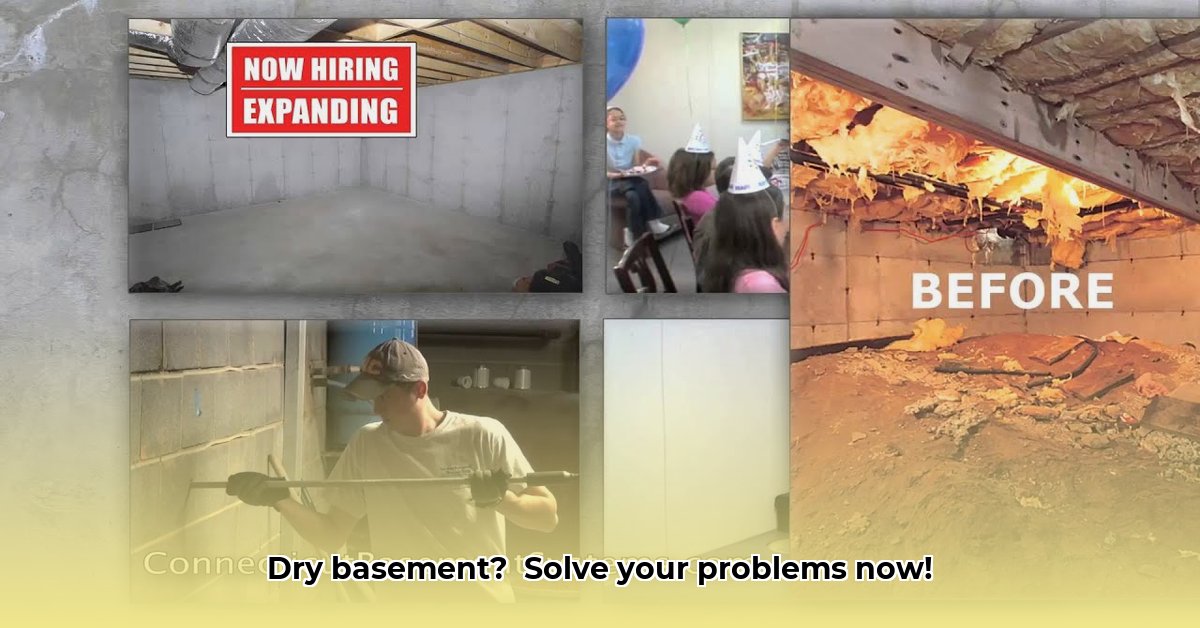
Everything Basementy: Conquer Your Basement Challenges and Create the Space You've Always Dreamed Of
Basements often get a bad rap, conjuring images of dampness, musty smells, and forgotten corners. But your basement doesn't have to be a neglected space! With the right knowledge and approach, you can transform it into a valuable asset. Ignoring basement problems, however, can lead to costly repairs, health issues, and structural damage. This guide empowers you to tackle "everything basementy" and create the space you've always envisioned. Did you know that nearly 60% of homeowners experience some form of basement water damage? [Source needed - insert statistic if available from draft article] For more on basement symbolism, check out this interesting article: Basement Dreams.
Unmasking the Usual Basement Suspects: Common Problems
Understanding common basement issues is crucial for effective remediation. Let's explore some frequent culprits:
Moisture Mayhem: Dampness is the root of most basement problems, often stemming from cracks in the foundation, poor drainage, or high humidity. This leads to mold and mildew growth, significantly impacting air quality and health.
Mold and Mildew Misery: These thrive in damp environments. Visible as fuzzy patches (often black, gray, or green), they trigger allergies and respiratory problems. Early detection is essential.
Pest Patrol: Pests love dark, damp areas. Insects and rodents can damage belongings and spread disease. A thorough inspection is crucial.
Structural Cracks and Settlement: Cracks in foundation walls or floors can indicate soil settlement, necessitating professional attention. Delaying repairs worsens issues and increases costs.
Poor Ventilation: Inadequate ventilation exacerbates humidity, furthering mold growth and making the basement feel stuffy and unpleasant.
The Basement Detective: Your DIY Inspection Checklist
Before calling professionals, a self-assessment is wise. Gather a flashlight and a moisture meter (readily available at hardware stores).
Visual Inspection: Carefully examine walls and floors for cracks (no matter how small), water staining, or signs of settling.
Moisture Meter Magic: Use the meter to check for hidden moisture. Higher readings indicate areas needing immediate attention.
Sniff Out Problems: A musty smell signals hidden moisture or mold.
Look for Leaks: Check pipes and windows for water damage.
Pest Search: Look for droppings, nests, or holes in walls.
If you find significant issues (extensive cracks, mold, persistent water), call professionals immediately.
Basement Rescue Mission: Remediation Strategies
Solutions depend on the severity and root cause. Here's a breakdown:
| Solution | Pros | Cons | Risk of Failure | Cost Impact |
|---|---|---|---|---|
| Interior Waterproofing | Relatively inexpensive, less disruptive, quick turnaround | Less effective for severe problems; may not address root cause. | Moderate | Low to Moderate |
| Exterior Waterproofing | More effective for severe leaks; addresses the source; longer-lasting solution | More expensive, more disruptive (excavation required); potentially more complex | Low | Moderate to High |
| Crawl Space Encapsulation | Controls moisture and humidity; improves air quality; can increase home's value | Can be expensive, may require specialized professionals. | Moderate | Moderate to High |
| Foundation Repair | Addresses structural issues; prevents further damage; increases home's value | Very expensive, highly disruptive. | High | High to Very High |
Interior Waterproofing: This involves applying a waterproof coating to interior surfaces. Effective for minor moisture issues but insufficient for severe water intrusion.
Exterior Waterproofing: This more involved process involves excavating around the foundation to apply a waterproof membrane and improve drainage. Though more expensive, it's significantly more effective for long-term solutions.
Crawl Space Encapsulation: Sealing the crawl space prevents moisture and pest intrusion, often including a vapor barrier, improved ventilation, and a dehumidifier.
Foundation Repair: Addresses structural issues like cracks and settling. It's the most expensive but necessary for structural integrity concerns.
Finding Your Basement's Knight in Shining Armor: Choosing a Contractor
Selecting the right contractor is crucial. Follow these guidelines:
Check Credentials: Verify licensing, insurance, and a proven track record.
Seek References and Reviews: Contact previous clients and check online reviews.
Get Multiple Quotes: Compare detailed quotes, ensuring they are itemized and include all aspects of the work, to ensure you're getting a fair price and comparing apples to apples. Beware of quotes that are unusually low.
Detailed Contract: Ensure the contract clearly outlines the work scope, payment schedule, warranty, and timelines.
DIY or Pro: When to Call in the Reinforcements
Minor issues (small cracks, minor surface mold) might be DIY-friendly. However, significant problems demand professional expertise to prevent further damage and costly repairs.
Basement Bliss: Long-Term Maintenance and Prevention
Proactive maintenance is key to preventing future problems.
Regular Cleaning: Keep the basement clean and dry to prevent mold and mildew.
Ventilation is Key: Ensure proper ventilation. Exhaust fans are valuable additions.
Dehumidification: A dehumidifier is particularly helpful in humid climates.
Regular Inspections: Regularly check for leaks, cracks, or pest activity. Early detection saves money and prevents larger problems.
Addressing basement problems proactively protects your home, increases its value, and enhances your overall quality of life. A dry, healthy basement transforms a neglected space into a valuable asset.